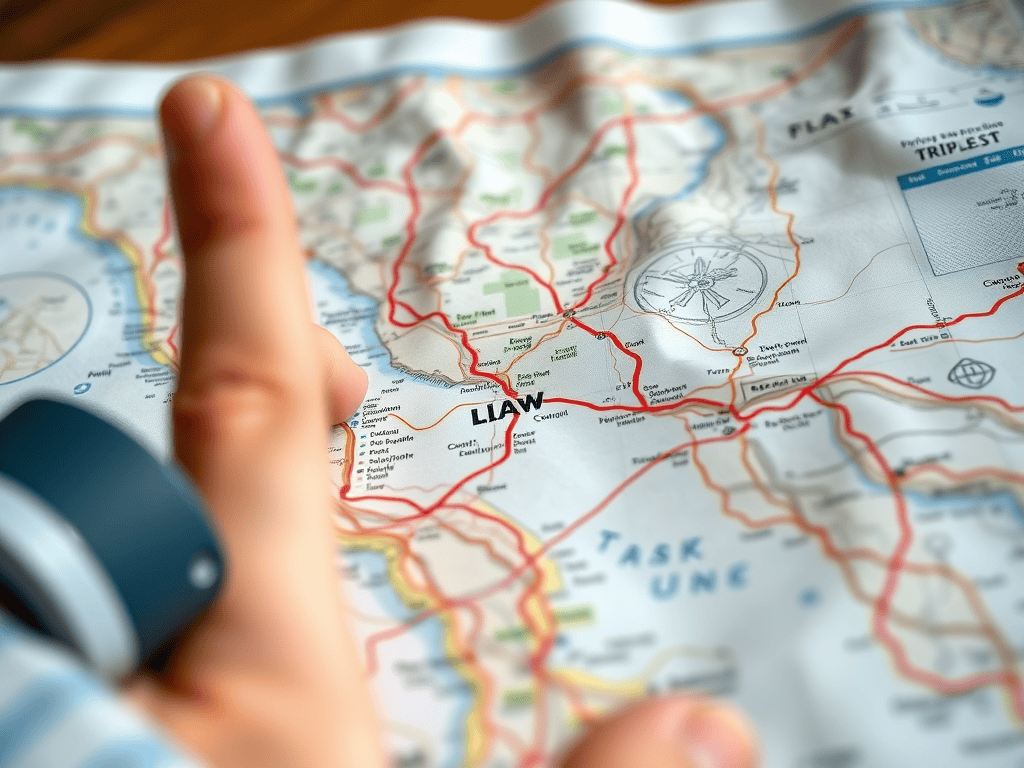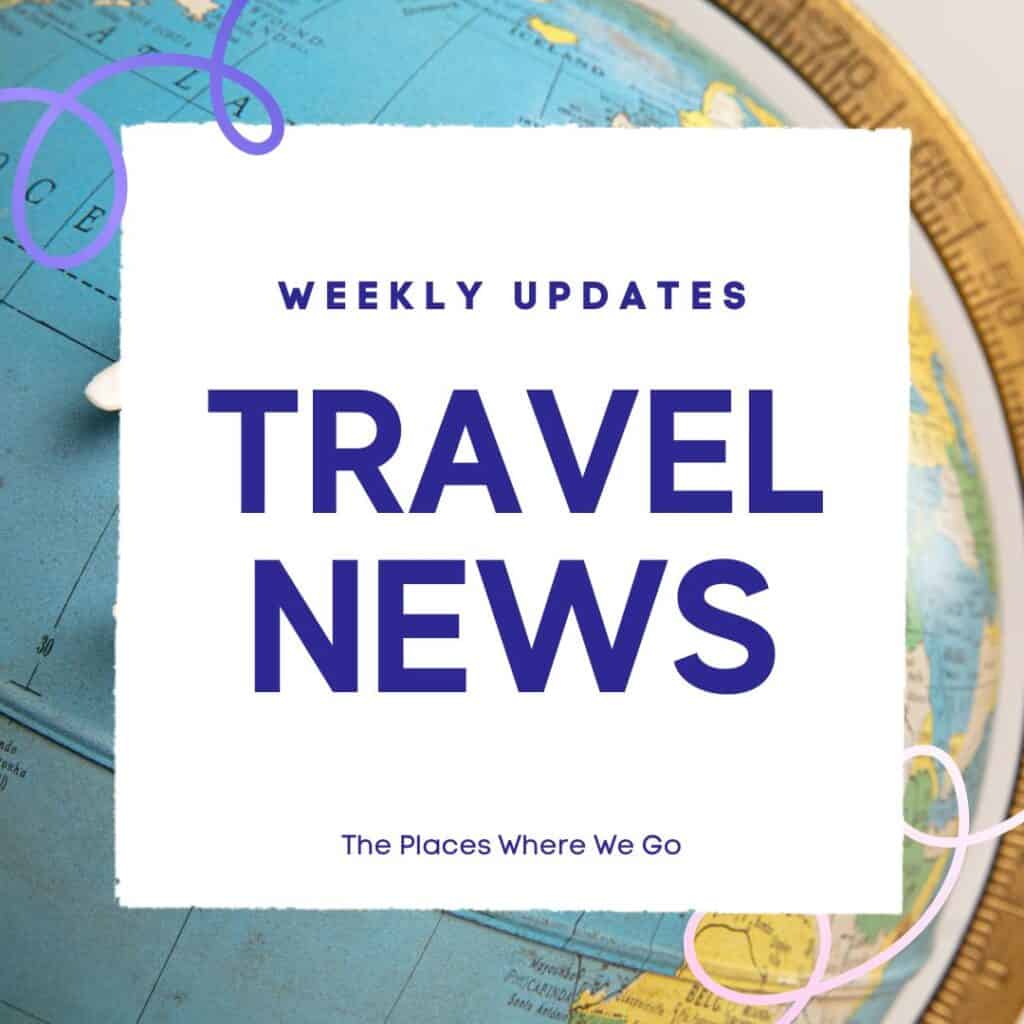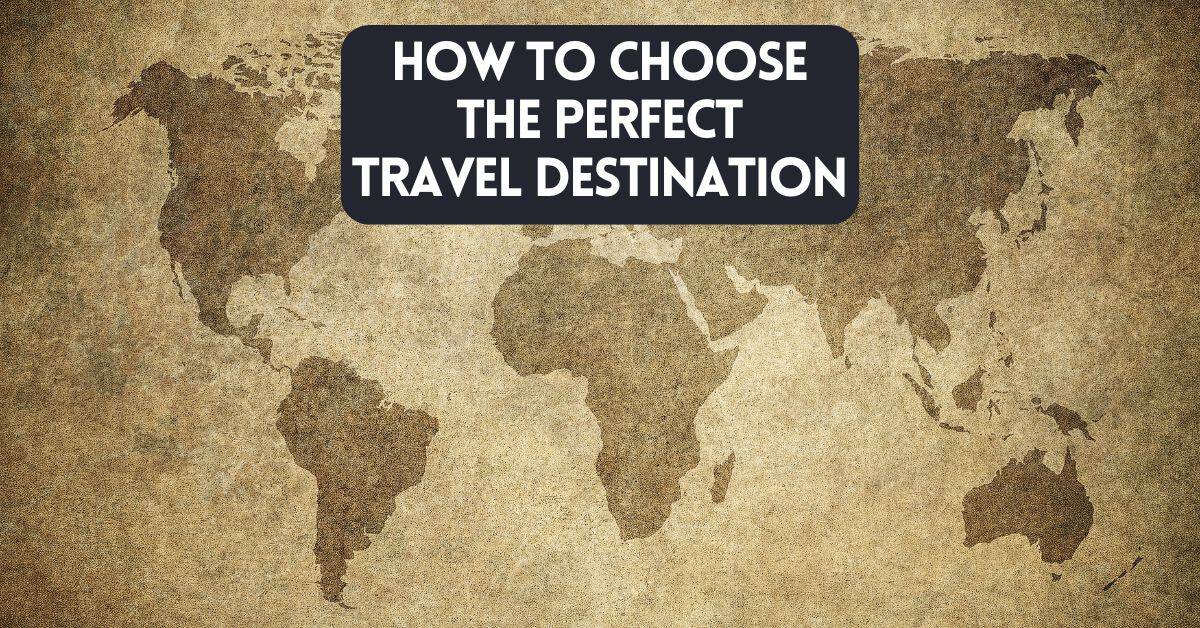How to Choose the Perfect Travel Destination
Planning your next adventure starts with one of the most exciting steps: selecting a travel destination. With the world as your oyster, choosing the perfect travel destination can feel overwhelming. While it’s tempting to dream of far-off lands or exotic locales, choosing the right destination requires balancing a few important logistical factors. From figuring out how much time you can spend on your trip to determining your budget, there are key considerations to ensure your vacation becomes a positive experience. This guide will walk you through the key factors to consider, help you create a checklist to choose your perfect travel destination, and ensure your vacation is everything you dream of (and more).
The Places Where We Go contains affiliate links and is a member of the Amazon Services LLC Associates Program. As an Amazon Associate, we earn from qualifying purchases at no extra cost to you when you purchase using one of these Amazon links. Read our disclaimer and privacy policy for more information.

Factors to Consider When Choosing a Travel Destination
Picking a travel destination isn’t just about pointing at a map and going wherever your finger lands (though that could be fun too!). To make the most of your trip, there are several factors to think about before making a choice.
1. Time Available for Travel
The amount of time you have will significantly shape your destination choices. If you only have a long weekend, you’ll likely want to stick to closer, regional destinations. Think about places you can reach within a few hours. If you have a week or more, you can consider international or distant places requiring longer travel times. Don’t forget to factor in travel days—flying across the world might eat into precious sightseeing time!
When our kids were little and we had limited vacation time from work, we planned vacations within a one day drive of our Southern California home like Disneyland and San Diego trips or camping adventures at Sequoia National Park.
In later years, when more vacation time accrued at work, we ventured into overseas trips – first a one-week trip to Ireland, then a 10-day vacation in Italy, and in recent years, 3 to 4 week adventures at global destinations.
Timing Tip:
- Keep jet lag in mind if you’re planning to cover a lot of ground in a short time. Opt for destinations in similar time zones if you have less than a week.
- Don’t forget you might lose an entire day when traveling overseas. A family member of ours forgot to do so when booking a trip to Ireland and found her vacation included one day less than she planned.
Get Free Weekly Travel News Updates

2. Budget Considerations
Your budget plays a huge role in determining where you can go and what you can do once you get there. No matter how amazing a destination sounds, it’s important to pick one that aligns with your financial situation.
Consider the cost of flights or transportation, accommodations, meals, attractions, and day-to-day expenses. Some destinations may have cheaper flights but higher accommodation prices, while others offer affordable lodging options but more expensive flights. Research what your money will buy you in different regions, and be realistic about the overall cost.
Don’t expect that costs for hotels and food are the same everywhere. We’ve been to relatively expensive places (Copenhagen, Denmark) and other areas where money goes a long way (Krakow, Poland). Understanding the local costs in your dream destinations will help you avoid surprises and even help you pick places where your money travels farther.
Tips to Stay Within Budget:
- Look for affordable destinations or nearby spots that cut down on travel expenses. Southeast Asia, parts of Eastern Europe, and South America often offer incredible experiences at lower costs.
- Consider the timing of your trip. Traveling in the off-season can cut expenses significantly while avoiding crowds.
- Use tools like Skyscanner or Google Flights to get affordable airfare deals.
3. Safety of the Destination
Traveling should be about fun and relaxation, not worrying about your safety. Before selecting a destination, research current safety conditions, political stability, and health advisories. Check government travel advisories, read online forums, and consider any personal or medical safety concerns, especially when traveling internationally. Don’t let fear hold you back, but make informed choices and prepare yourself by understanding the risks and precautions.
Subscribers to our weekly travel newsletter will be familiar with our weekly updates on the latest travel advisories issued by the U.S. Department of State. That’s a great resource to learn about recent issues.
Quick Safety Tips:
- Look up travel advisories from official bodies like the U.S. Department of State.
- Choose destinations that align with your personal comfort level regarding safety and accessibility.
4. Desire to Visit the Destination
While logistics are essential, one of the most critical factors that influence choosing a destination is how much you want to go there. Have you been dreaming about a specific place for years? Does the culture, cuisine, or history excite you? Your emotional connection to a destination will enhance your experience and help you enjoy the trip even more.
Additionally, consider your travel style. Are you a mountain lover or a beach bum? History buff or adventure seeker? Your choice of destination should reflect the type of experiences you’re passionate about.
We’ve come to realize that we much prefer adventure travel and cultural exploration over relaxation, so we pick destinations accordingly.
Popular Types of Trips:
- Adventure Travel: Costa Rica, New Zealand, Iceland
- Relaxation: Maldives, Bali, Santorini
- Cultural Exploration: Japan, Italy, Morocco
- Nature Escapes: Banff National Park (Canada), Patagonia (Chile/Argentina), Kruger National Park (South Africa)
5. Ease of Getting There
How easy is it to reach your dream travel destination? Are there direct flights or a need for multiple layovers? Will you need a visa or special documentation? Consider the logistics of travel and how that fits into your schedule and patience level.
Remote destinations might be appealing but require more time and effort to reach. Likewise, busy airports, long drives, or ferry rides can add to your travel time. Factor in transportation availability, such as public transit options at your destination, so getting around is easy once you arrive. Consider if you want to add a rental car upon reaching your destination or if you’ll use railway or bus services. Don’t forget planning how to get from an airport to your lodging destination. Companies like GetTransfer and Welcome Pickups are good options.
After several overseas trips from Los Angeles to Europe, we realize that long airplane flights are not our favorite experience. Moving forward, we’re planning for mini stopovers versus layovers to break up extended flight times. As an example, for our upcoming trip to France, we’ll stop first in Toronto for a couple of days and visit Niagra Falls before continuing on with the second leg of the long overseas flight.
Getting To Your Destination Tips
- Check for direct flights or options with shorter layovers to minimize travel time and potential delays.
- Research visa requirements and apply well in advance if necessary.
- Consider the cost of transportation (e.g., taxis, public transit) at your destination when budgeting for your trip.
- Plan ahead for any potential language barriers or cultural differences that may affect transportation logistics.
6. Weather Conditions and Seasonality
The weather can shape your entire experience. Research your potential destination’s climate during your travel dates—it’s no fun visiting the beach during monsoon season or hitting a ski resort when there’s no snow.
We prefer cold weather to extreme heat. As a result, we avoid many southern United States destinations during summer.
For Every Season:
- Spring: Japan (for cherry blossoms), Netherlands (tulip fields)
- Summer: Greece, Alaska, Norway
- Fall: New England, Kyoto, Bavarian Alps
- Winter: Lapland, Switzerland, Canada
7. Cultural Compatibility
Every destination has its own cultural nuances, etiquette, and behavioral norms. Consider whether you’re ready to explore a completely different culture or prefer something more familiar.
Example:
- While Japan offers serene temples and diverse cuisine, it also requires extra etiquette awareness (bowing as a greeting, removing shoes indoors, etc.).
8. The Type of Traveler You Are
Are you traveling with family, on a solo adventure, or planning a romantic getaway? Destinations often cater to specific types of travelers, so choose one that suits your group dynamics. If you enjoy DIY travel (like us), consider the ease of getting around a new place completely on your own. On the other hand, if navigating unknown lands is uncomfortable, think about tours and curated experiences. We’ve supplemented some of our DIY adventures with occasional tours from companies like Viator and GetYourGuide.
These days, the majority of our adventures are those of the couples variety and occasionally with friends. We select destinations that align with this mode of travel, such as a romantic trip to France for the two of us or a week at a San Diego RV Resort to camp with friends.
Recommendations Based on Traveler Type:
- Solo Travelers: Thailand, Portugal, Ireland
- Families: Orlando (Disney World), Copenhagen, Tokyo
- Couples: Venice, Bora Bora, Amalfi Coast
High-Level Research Opportunities
Once you’ve narrowed down a few possible destinations, take time to research them in more detail. Thankfully, many resources can help you learn about a place before you book anything:
- Travel forums (like TripAdvisor or Reddit) offer firsthand experiences from travelers who’ve been there recently.
- Podcasts (e.g., The Places Where We Go) often cover different destinations, offering insights into culture, activities, and travel tips.
- Travel blogs and YouTube channels give you a visual sense of the area and advice from people who have explored it.
- Guidebooks provide a structured and reliable overview of destinations, including top sights, historical context, and logistical information. Our favorite travel guidebooks are those published by DK Eyewitness Travel.
While we will discuss these research tools in future posts, these initial resources are great for evaluating destinations that meet your needs and interests.
The Places Where We Go is a Feedspot Top 100 Travel Podcast
Destination Selection Checklist
Choosing the perfect travel destination isn’t just about the destination itself. It’s about creating the experiences, memories, and adventures you’ll carry with you forever.
Here’s a quick checklist to guide you through selecting the right destination for your future trip:
- Time available: How many days can you travel, and how far can you realistically go?
- Budget: How much can you afford to spend on flights, accommodation, food, and activities?
- Safety: Is the destination safe for travelers? Check government travel advisories.
- Personal interest: Does the destination excite and inspire you?
- Identify your purpose: Are you seeking relaxation, adventure, or cultural exploration?
- Ease of travel and logistics: Do flight times and connections work for you? Is transportation convenient and within your comfort level? Have you reviewed time zone considerations?
- Research Seasonal Conditions: What’s the weather like during your travel window?
- Research: Have you done a high-level review using resources like travel forums, podcasts, and blogs? Visit sites like TripAdvisor to gain insight from fellow travelers.
- Create a Shortlist: Choose and compare 3–5 destinations that meet your criteria.
Choose Your Next Travel Destination
At the end of your selection process, you’ll have a clear winner—your dream destination, ready for you to explore.
Stay tuned for future posts in this travel planning series, where we’ll delve into the best tools and resources for researching and preparing for your trip.
Thanks for reading our article. Happy travels and we hope to see you at the places where we go!
Julie & Art

